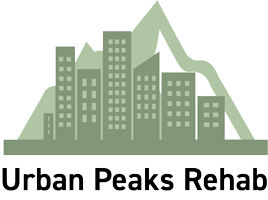As our blog has discussed before, the use of Suboxone in recovery suffers many stigmas. The most common stigma being that the use of Suboxone in the eyes of groups that promote abstinence as the only “true” pathway to recovery means you are not truly recovering. This stigma is particularly damaging because it isolates those suffering from addiction that are pursuing recovery through the use of Suboxone from the benefits of having a community to support them through the highs and lows that are universally experience on all paths to recovery.
Reading the story of Amanda S. “From Heroin User to Health Advocate: A Suboxone Success Story” may be the eye opener many people need to understand that this stigma needs to be silenced. The use of Suboxone to begin or, in Amanda’s case, remains in recovery while dealing with chronic illness does not make her recovery any less real or admirable.
Amanda’s story begins differently than the story we have all become accustomed to, the story that starts in a doctor’s office with a prescription. In this candid interview Amanda states her introduction to drugs was actually through a program aimed to deter youth from using illegal drugs at her school, and a product of her own curiosity.
“I think 5th grade D.A.R.E. class peaked my interest, something caused me to be really curious anyways, and I ending up reading all the books about drugs at my library. I was really drawn to the drug culture and my friends were a group of free thinkers, artists and musicians, so very few of them thought drugs were bad. I remember they were easily accessible and I wanted to do them, so I sought them out…. I was using hard drugs heavily for 15 years and I was hooked on Heroin the last 3-4. But I always viewed medicine for treatment and street drugs for getting high, so my addiction didn’t stem from prescriptions that time. I skipped the pharmacy all together. It all came to an end when I landed in jail and went through withdrawal for 24 hours before my dad bailed me out, as long I agreed to go to rehab.”
Upon agreeing to go rehab, her family discovered that few options were available. A state agency placed Amanda in a small women’s rehab facility. She believes that environment truly helped her, and she managed her substance use disorder cold turkey for four years. Then she was diagnosed with Fibromyalgia. Fibromyalgia causes chronic widespread muscle pain and tenderness, and the only suggested treatments regardless of her resistance and her history were opiates.
“I seen multiple specialists, tried a variety of treatment and gave into opiate pain medicine, because the whole process was pretty horrible. The doctors judged me immediately even though I asked for non-opiate answers. Later, a doctor put me on Opana (which I had never heard of) and I was so overmedicated it contributed to a breakdown. My family admitted me to an inpatient mental hospital where they stopped all my medications. I couldn’t get out of bed for days, I was in so much pain, I was finally offered Suboxone, I’ve been on it ever since…. I felt like I could finally get out of bed, function and take a shower! I was impressed that my head wasn’t foggy and I didn’t feel “high”. That feeling hasn’t changed over time, and because it helps with my fibromyalgia so much, I take less medicine now, than I ever did.”
Amanda has been successfully using Suboxone to manage both her substance use disorder and her fibromyalgia for roughly 8 years. In reference to her recovery Amanda simply states.
“I would be really upset with myself, and I would disappoint a lot of people again if I strayed from my path. So I don’t forget that. My sobriety has been the only thing I haven’t screwed up in life, so I hold onto it with everything I’ve got.”
Read Amanda’s full interview at https://www.workithealth.com/blog/amanda-heroin-user-to-health-advocate.

